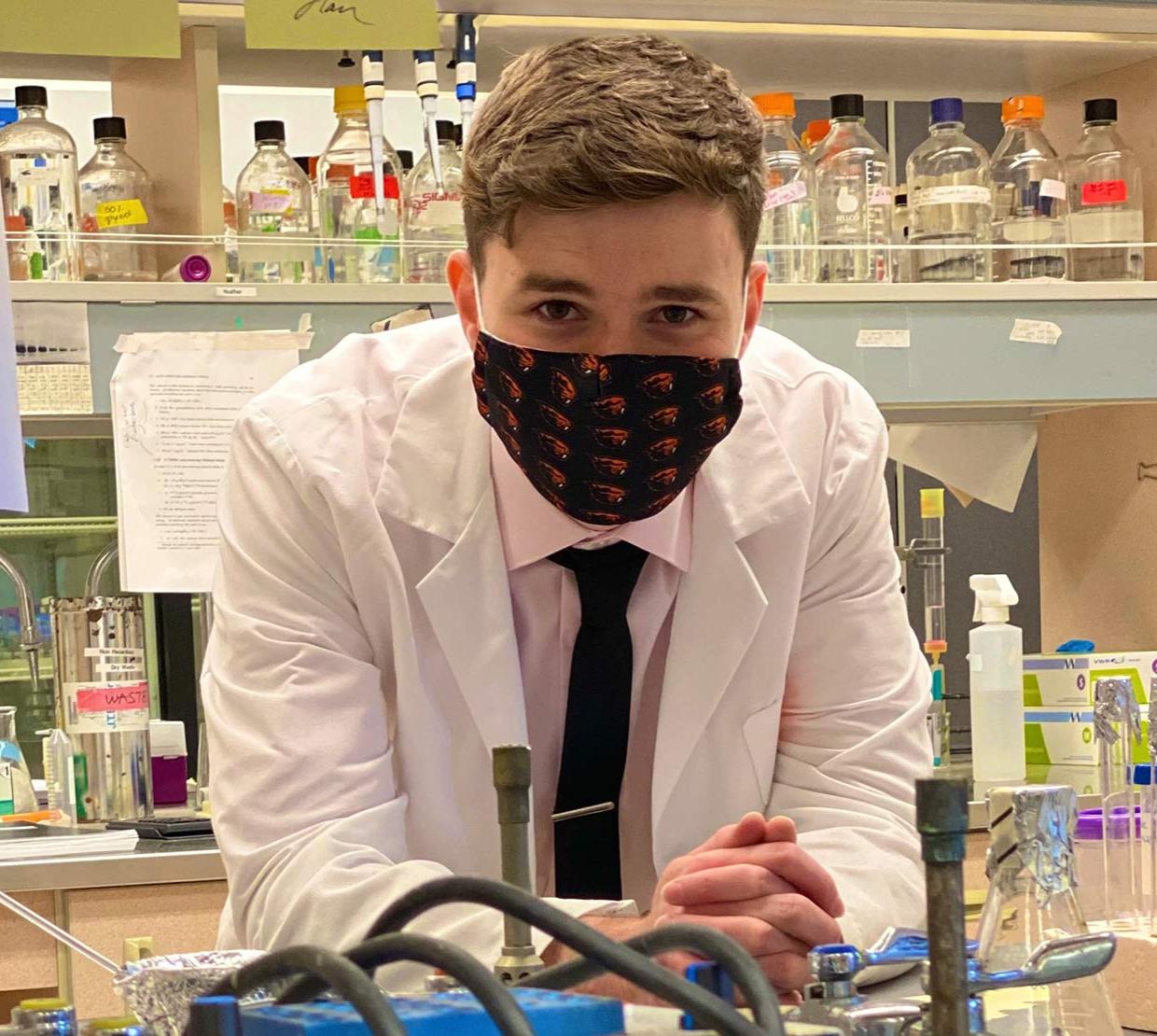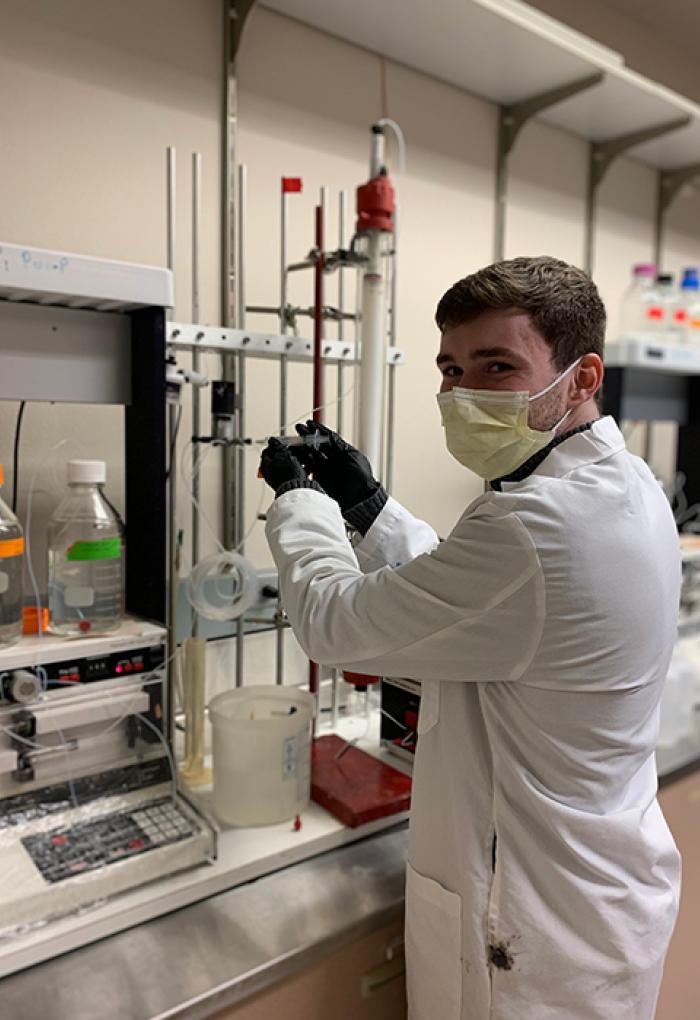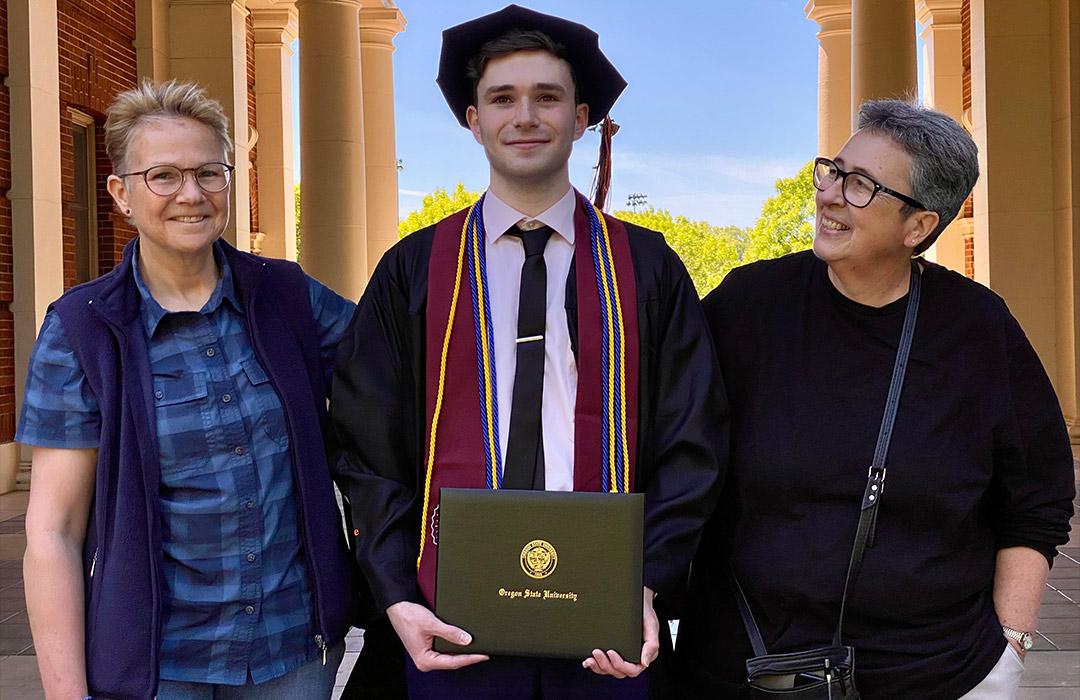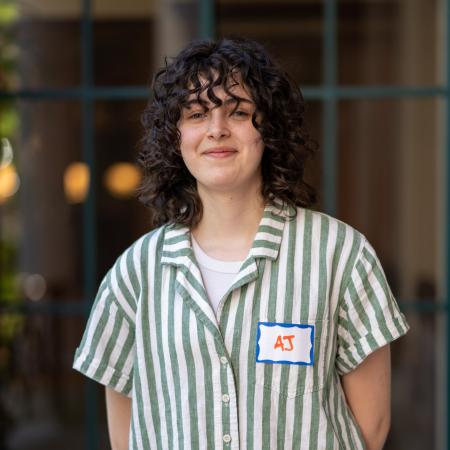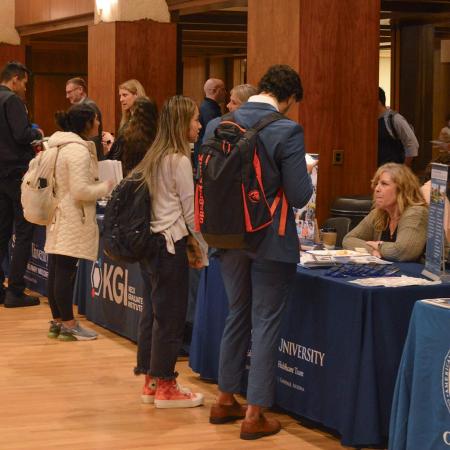Not many undergraduate students get to be listed as co-authors on research papers. But after more than three years doing research as an undergraduate, Honors biochemistry and biophysics senior Seth Harris Pinckney has co-authored two manuscripts, one of which is already published in a prestigious scientific journal. It shares early results on the SARS-CoV-2 virus from one of the few labs in the world that determines the structure of disordered proteins in viruses in a nuclear magnetic resonance spectroscopy facility.
Even in high school, Seth Pinckney knew he wanted to be involved in research in college. That desire led the Eugene, Ore. native to Oregon State University in fall 2017. “Oregon State was close to home, but not too far away,” and has a strong reputation as a place where undergraduate students can engage in research. As an incoming first year student, Pinckney received the Finley Academic Excellence scholarship and the International Baccalaureate Diploma scholarship – both awarded to outstanding new students.
Early in his first year, Pinckney applied to the Undergraduate Research, Scholarship and the Arts, or URSA Engage, Program that provides funding for transfer, first- and second-year students to pursue research opportunities under a faculty mentor. After looking up different professors, he landed on the webpage of Elisar Barbar, biophysics professor and director of the Biomolecular Nuclear Magnetic Resonance (NMR) Facility at Oregon State University.
“I ended up reading some of her papers, which was really daunting for freshman Seth because I didn’t know how to read research papers at that time,” said Pinckney. “I sent her an email asking to meet to talk about her research. She invited me to go to lab meetings to spectate and learn. I ended up going into the Barbar Lab, and almost three-and-a-half years later, here I am!”
"Working as a part of the Barbar team has provided me with an exceptional research and work foundation."
During the COVID-19 pandemic, several members of the lab switched their focus to the SARS-CoV-2 nucleocapsid protein, or N protein, to better understand its role in the virus’ infection life cycle. “The nucleocapsid protein is known to be very important for the life cycle of COVID. It interacts with and protects the genome of the virus. The genome is extremely huge. It’s almost 30,000 nucleotides, which is quite long relative to viruses,” explained Pinckney. “The full-length protein is really hard to study. Luckily, complex disordered proteins are Elisar Barbar’s specialty, and we were able to use NMR and other biophysical techniques to figure out what’s going on in the virus.”
